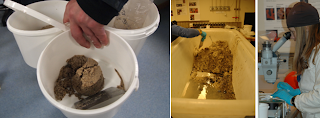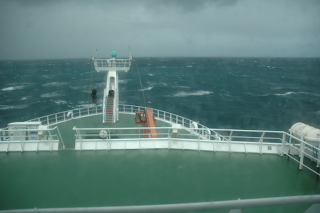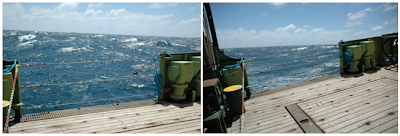You can divide oceanography - ocean sciences - into three parts: the biological oceanography (the part that studies life in the oceans, the patterns of distribution and abundance of species such as the variability of algae bloom, etc.), the chemical oceanography (that surveys how much CO2 is dissolved in the oceans, iron, traces, etc.) and the physical oceanography (the part that explores currents, the formation of water masses and their characteristics, warming of the global ocean, etc.).
The ocean is a 3D fluid environment where movement can be sidewards AND up & down. This is not straightforward for us human beings who live most of our day-to-day life (with the exception of scuba diving and flying in an aeroplane) across a 2D static surface.
 Our first activity at 'Middle of What' is a CTD yo-yo deployment. The CTD is the instrument that measures conductivity (salinity), temperature and depth (pressure). And ‘yo-yo deployment’ means that we are going to put it deep down, close to the seabed, and back near the surface and deep down again and so on … for 13 hours! Another instrument (called an ADCP) which is able to measure the speed of the currents is tied to the CTD frame.
Our first activity at 'Middle of What' is a CTD yo-yo deployment. The CTD is the instrument that measures conductivity (salinity), temperature and depth (pressure). And ‘yo-yo deployment’ means that we are going to put it deep down, close to the seabed, and back near the surface and deep down again and so on … for 13 hours! Another instrument (called an ADCP) which is able to measure the speed of the currents is tied to the CTD frame.Thanks to these accurate instruments we will collect a large amount of data. Jane, the physical oceanographer on board, will then be able to differentiate the water masses (layers of water with their own characteristics), assess the variability of the water column (structure of the layers), she will be able to compile the whole water column current velocities and see what tidal effects there are around the seamount, such as internal waves. Tides can have a strong impact on the small biota (fauna and flora) both at the sea surface and at the seabed.

















































